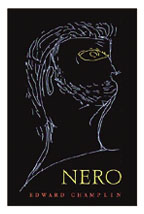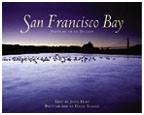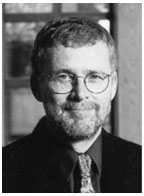March 10, 2004: Reading Room
|
Classics professor Edward Champlin argues that Nero’s reputation was distorted by two groups he offended, the Roman elite and Christians. (Harvard University Press) |
Nero: Villain or hero?
Edward Champlin examines the Romans’ view of their legendary ruler
By David Marcus ’92
To modern readers, the first-century Roman emperor Nero is the archetype of a terrible ruler. According to legend, Nero murdered many of his own family members; he fiddled while Rome burned in the great fire of 64 C.E., which he authorized; and his delusions of artistic greatness extended to his dying words: “What an artist dies in me.”
But Nero had a much more positive posthumous reputation in the ancient world, Princeton classics professor Edward Champlin writes in his biography of the man who ruled the Roman empire from 54 to 68 C.E. For much of the ancient world, Nero was a folk hero; Augustine wrote in 400 C.E. that many people hoped and believed he would return.
 Champlin
stumbled upon his topic when Princeton history professor Peter Brown asked
him to prepare a paper for a seminar on Trajan, Rome’s emperor from
98 to 117 C.E. While writing the paper, Champlin pondered which Roman
leader had a legendary status closest to that of Alexander the Great,
Aristotle’s most famous student, the conqueror of much of the Middle
East in the 4th century B.C.E., and a man whose return was confidently
expected for centuries after his death. The answer: Nero, whose awful
reputation today “is based on the writings of two groups he offended:
the Roman elite and the Christians, whom he persecuted by chance, probably
not knowing who they were,” Champlin says.
Champlin
stumbled upon his topic when Princeton history professor Peter Brown asked
him to prepare a paper for a seminar on Trajan, Rome’s emperor from
98 to 117 C.E. While writing the paper, Champlin pondered which Roman
leader had a legendary status closest to that of Alexander the Great,
Aristotle’s most famous student, the conqueror of much of the Middle
East in the 4th century B.C.E., and a man whose return was confidently
expected for centuries after his death. The answer: Nero, whose awful
reputation today “is based on the writings of two groups he offended:
the Roman elite and the Christians, whom he persecuted by chance, probably
not knowing who they were,” Champlin says.
The resulting book isn’t an attempt to rehabilitate Nero’s reputation, but to understand why he became such a hero in Roman culture. “Much of what Nero did, distorted by later reports, looks very different when set in the context of [Nero’s] contemporary norms,” Champlin says. “One result of this, and the most fun, is that I get to look at all the stories that make Nero so notorious.”
Nero’s love of performance reflected a deep understanding of the importance of spectacle for the Romans. Elites like Tacitus and Suetonius, first-century Roman historians who treat Nero harshly, didn’t like his flamboyance, but ordinary Romans probably loved it, says Champlin.
Many of Nero’s actions – or claimed actions – were aimed at a public whose lives were permeated by mythology, which “provided simple, universal codes that everyone could comprehend,” writes Champlin. When Nero claimed (falsely, Champlin believes), that he slept with his mother, Agrippina, before he killed her, he wasn’t staking a claim as a pervert; instead, he was making an analogy between himself and Oedipus, the legendary king of Thebes who unwittingly married his mother and killed his father, and with Orestes, who murdered his mother to avenge her killing of his father.
Champlin, who has written about Roman wills and Marcus Aurelius’s
tutor, Fronto, hopes to reach a broader audience with this, his third,
book. “I was tired of writing books read by about eight people, including
my mother. I wanted do something on a subject ordinary people might actually
have heard of.” ![]()
David Marcus ’92 is a frequent PAW contributor.
BOOK SHORTS
 Halfway
to Everywhere: A Portrait of America’s First-Tier Suburbs —
WILLIAM H. HUDNUT III ’54 (Urban Land Institute). The author looks
at the country’s first suburbs, built through the middle of the 20th
century, which are experiencing urban-like problems, including aging infrastructure,
population decline, crime, and increasing poverty. In a series of case
studies Hudnut examines how these suburbs were born, declined, and can
be revitalized. A former mayor of Indianapolis, Hudnut is a senior resident
fellow at the Urban Land Institute.
Halfway
to Everywhere: A Portrait of America’s First-Tier Suburbs —
WILLIAM H. HUDNUT III ’54 (Urban Land Institute). The author looks
at the country’s first suburbs, built through the middle of the 20th
century, which are experiencing urban-like problems, including aging infrastructure,
population decline, crime, and increasing poverty. In a series of case
studies Hudnut examines how these suburbs were born, declined, and can
be revitalized. A former mayor of Indianapolis, Hudnut is a senior resident
fellow at the Urban Land Institute.
 San Francisco Bay:
Portrait of an Estuary — JOHN HART ’70, photographs by David
Sanger (California). Hart explores San Francisco Bay’s history, including
its ecology and urban and industrial development. The bay, with an inland
delta, is one of the largest estuaries in the Americas and one of the
most degraded. The book describes the local movement to save the bay.
Hart is an editor for the literary magazine Blue Unicorn.
San Francisco Bay:
Portrait of an Estuary — JOHN HART ’70, photographs by David
Sanger (California). Hart explores San Francisco Bay’s history, including
its ecology and urban and industrial development. The bay, with an inland
delta, is one of the largest estuaries in the Americas and one of the
most degraded. The book describes the local movement to save the bay.
Hart is an editor for the literary magazine Blue Unicorn.
 A Death in Washington:
Walter G. Krivitsky and the Stalin Terror — GARY KERN *69 (Enigma).
Kern investigates the career of Krivitsky, a Soviet superspy who, disillusioned
by Stalin’s purges, defected in 1937 and escaped to France and then
the U.S. Using archival sources, Kern also explores Krivitsky’s death
in 1941, officially ruled a suicide, but suspected by many to be a revenge
killing ordered by Stalin. Kern is a translator and specialist in Russian
literature. By Lucia S. Smith ’04
A Death in Washington:
Walter G. Krivitsky and the Stalin Terror — GARY KERN *69 (Enigma).
Kern investigates the career of Krivitsky, a Soviet superspy who, disillusioned
by Stalin’s purges, defected in 1937 and escaped to France and then
the U.S. Using archival sources, Kern also explores Krivitsky’s death
in 1941, officially ruled a suicide, but suspected by many to be a revenge
killing ordered by Stalin. Kern is a translator and specialist in Russian
literature. By Lucia S. Smith ’04
![]()

